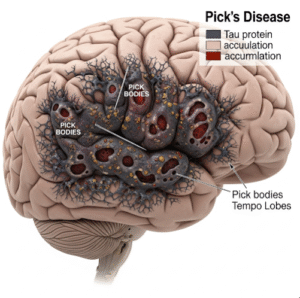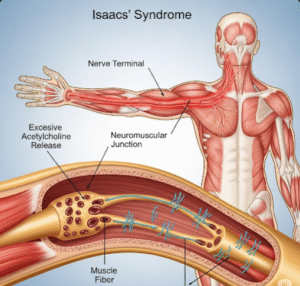Overview
Birth differences, commonly referred to as congenital anomalies, are structural, functional, or metabolic abnormalities present at birth. These anomalies can range from mild and manageable conditions to severe disorders that affect multiple organs and systems. Common examples include heart defects, cleft lip and palate, limb malformations, neural tube defects, and genetic syndromes such as Down syndrome.
In Korea, prenatal screening, genetic counseling, and advanced neonatal care have significantly improved early detection and management of congenital anomalies. Multidisciplinary care teams in hospitals provide specialized interventions to ensure optimal outcomes for affected infants.
What are Birth Differences (Congenital Anomalies)?
Congenital anomalies involve any abnormality present from birth, affecting physical appearance, organ structure, or physiological function. They are classified as:
- Structural anomalies: Physical defects like cleft lip/palate, limb malformations, congenital heart defects
- Functional anomalies: Problems with organ function, metabolism, or neurological development, such as congenital hypothyroidism or metabolic disorders
- Syndromic anomalies: Combinations of structural and functional abnormalities caused by genetic mutations or chromosomal disorders
These anomalies may be isolated to one organ or involve multiple systems, influencing the child’s health, development, and quality of life.
Symptoms
Symptoms vary widely depending on the type and severity of the anomaly:
- Physical signs: Malformed limbs, facial asymmetry, cleft lip/palate, or visible organ abnormalities
- Organ dysfunction: Heart murmurs, breathing difficulties, liver or kidney issues
- Neurological or developmental delays: Cognitive, motor, or speech impairments
- Growth and nutritional problems: Failure to thrive, low birth weight, or stunted growth
- Metabolic or endocrine issues: Jaundice, hypoglycemia, or other biochemical imbalances
Early detection is critical for implementing timely interventions and preventing long-term complications.
Causes
The causes of congenital anomalies are multifactorial and may include:
- Genetic factors: Inherited mutations, chromosomal abnormalities (e.g., trisomy 21), single-gene disorders
- Environmental exposures: Maternal infections (rubella, cytomegalovirus), alcohol, tobacco, certain medications, or chemical toxins during pregnancy
- Nutritional deficiencies: Insufficient folic acid or vitamin B12 during early pregnancy
- Maternal health conditions: Diabetes, obesity, autoimmune disorders
- Unknown factors: In many cases, no identifiable cause is found
Risk Factors
- Maternal age over 35, which increases risk of chromosomal abnormalities
- Family history of congenital anomalies or genetic disorders
- Preexisting maternal medical conditions such as diabetes or thyroid disease
- Exposure to teratogens (medications, alcohol, drugs, or chemicals) during pregnancy
- Maternal infections during early pregnancy, including rubella, cytomegalovirus, or Zika virus
- Inadequate prenatal nutrition, particularly folic acid deficiency
Complications
The impact of congenital anomalies depends on their type and severity:
- Physical disability: Impaired mobility or motor function
- Developmental delays: Cognitive, speech, or learning difficulties
- Organ dysfunction: Heart, kidney, lung, or liver impairments
- Chronic health conditions: Epilepsy, metabolic disorders, endocrine problems
- Social and emotional challenges: Difficulties in school, social interactions, and psychological well-being
- Reduced life expectancy: In severe cases affecting vital organs
Prevention
While not all congenital anomalies can be prevented, several measures can reduce risk:
- Prenatal care: Regular monitoring of fetal growth, development, and maternal health
- Genetic counseling: For couples with a family history of congenital anomalies or previous affected children
- Vaccinations: Immunization against rubella and other preventable infections prior to pregnancy
- Avoiding harmful substances: Alcohol, tobacco, recreational drugs, and teratogenic medications
- Proper nutrition: Folic acid supplementation before conception and during early pregnancy to prevent neural tube defects
- Managing maternal health conditions: Effective control of chronic diseases such as diabetes, hypertension, and obesity
Treatment Options in Korea
Diagnosis
Korean healthcare providers utilize advanced prenatal and postnatal diagnostic tools:
- Prenatal ultrasound: Detects structural abnormalities in the fetus
- Fetal echocardiography: Evaluates congenital heart defects
- Genetic testing and chromosomal analysis: Identifies syndromes like Down syndrome or other genetic disorders
- Amniocentesis or chorionic villus sampling (CVS): Early detection of chromosomal abnormalities
- Newborn screening programs: Detect metabolic disorders, endocrine deficiencies, and other congenital conditions
Medical and Surgical Management
Treatment varies depending on the specific anomaly:
- Surgical interventions: Corrective surgeries for cleft lip/palate, heart defects, limb malformations
- Medication: Management of metabolic, endocrine, or organ-specific conditions
- Therapies: Physical, occupational, and speech therapy to support development and function
- Long-term monitoring: Regular follow-up for chronic complications and growth assessment
Rehabilitation and Support
- Multidisciplinary care teams including pediatricians, surgeons, therapists, and genetic counselors
- Family counseling and education on care strategies
- School and community accommodations for children with special needs
- Support groups and community resources for families
- Psychological support to manage stress and improve coping mechanisms
Prognosis
The prognosis for children with congenital anomalies in Korea depends on the type, severity, and timing of intervention:
- Early detection and treatment improve survival, functional outcomes, and quality of life
- Mild anomalies often allow children to lead normal lives with minimal intervention
- Severe anomalies may require ongoing care, multiple surgeries, and long-term rehabilitation
- Korea’s advanced healthcare infrastructure, specialized pediatric centers, and multidisciplinary care teams have significantly improved outcomes and life expectancy for affected children













